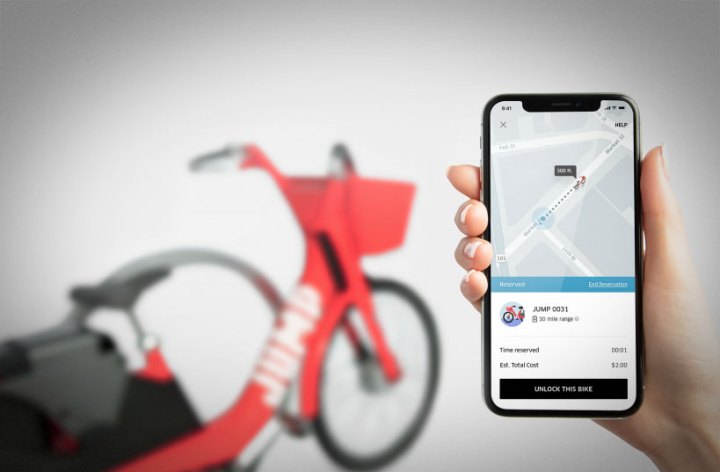
Curiously, it’s chosen one of the country’s hilliest cities — San Francisco — to launch the scheme, though the bikes do have small electric motors to assist you as you pedal up some of its famously steep inclines. “You’ll feel like a warrior charging up hills,” Uber says.
The company better known for car trips than bike rides has partnered with ebike company Jump for the pilot service, which from next week will appear as an option in the Uber app. Jump secured a permit for San Francisco in January to operate a service using electric-powered bikes, and ran trials in the city in the second half of last year.
How it works
To grab one of its two-wheelers, you simply tap on the bike icon in the app’s menu at the top left of the home screen. A map will then appear showing available bicycles close to your location.
Use the provided PIN to unlock the bike and you’re off, with the ride costing $2 for up to 30 minutes. Once you reach your destination, you can lock the bike to the nearest public rack, also indicated on the map.
As the scheme is a trial for now, Uber and Jump are only offering 250 bikes. If you’re interested in taking part, you can put your name down now on Uber’s waitlist.
To make sure those bikes don’t end up in the wrong places and to maximize their availability, Jump’s own staff will oversee operations.
Looking beyond ride-hailing
The bike scheme is the latest example of Uber looking beyond its car-based, ride-hailing roots in a bid to seek out additional revenue streams. It’s already operating its UberEats meal-delivery service in multiple cities, and last year launched Uber Freight, matching truckers with companies that need goods moved across the country. It’s also investing heavily in autonomous car technology.
Competition between bike-sharing operators has been heating up in the U.S., with more and more companies entering the market. But it’s not always plain sailing for those getting involved. Chinese firm Bluegogo, for example, pulled its bikes from the streets of San Francisco in March 2017 after just a couple of months of operation following a dispute over permits. It’s since gone out of business. And last year in San Francisco there were reports of a backlash against such services by some locals who claim the big tech companies are ruining their neighborhoods by causing a housing crisis and increasing income inequality.
Uber will be watching carefully to see how its offering is received, though it insists it provides “a convenient, environmentally friendly ride even in dense cities where space is limited and roads can be congested.”
The company said that depending on how it goes in San Francisco, the scheme “may” eventually roll into other cities, too.
Editors' Recommendations
- Sharing files on Android is about to get much easier
- Meet the exercise bike that wants you to play video games while working out
- The best mountain bikes
- Uber may be banned in London. Could the same thing happen in the U.S.?
- Recording rides won’t fix Uber’s assault problem, lawyers say, but it’s a start


